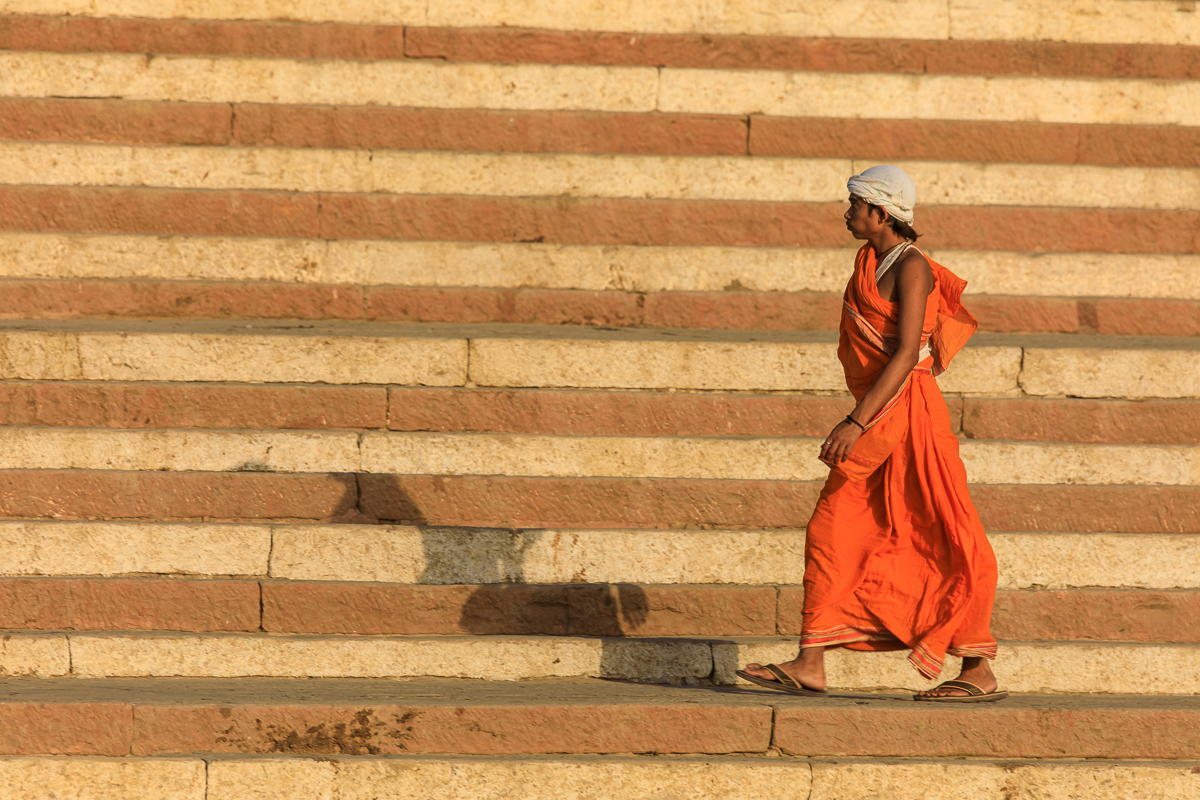Destination: India
Lewis Kemper photographs spiritual ceremonies, sacred cows, and tigers with the Tamron SP 150-600mm VC G2 and SP 15-30mm VC Wide-Angle lenses.
By Jenn Gidman
Images by Lewis Kemper
Lewis Kemper has been behind the camera for more than three decades, creating fine art, nature, and wildlife photography, as well as digital paintings and photo etchings. Lewis also loves to travel, often leaving his Sacramento home to traverse the States (he's been to every one except for the Dakotas) and see the world.
A trip this April took him to India for the third time, where he led a photo workshop to the holy city of Varanasi and also to two tiger parks in Central India: Bandhavgarh and Kanha. "I purposely chose the hot, dry season, because it's easier to spot tigers then," he explains. "Every day we were there it was over 100 degrees. The tigers tend to venture out in that weather for water and to congregate, which offers perfect photo opportunities."
The lenses he brought along on his journey to the South Asian republic: the Tamron SP 150-600mm VC G2 and the SP 15-30mm VC Wide-Angle. "The 150-600 G2 covered just about everything I could want to photograph, allowing me to zoom in for amazing wildlife shots from safe distances, especially for the tigers," he says. "The 15-30 was terrific for capturing landscapes, but also for when I was in Varanasi and walking through streets and alleyways where you could literally stretch your arms out and touch the wall on either side. The 15-30 performed superbly in those close quarters."
The number-one task Lewis assigned himself, before taking any photos in his destination: He looked for the best light. "After I find the light, then I'll try to find a subject that goes along with that light," he says. "For those times (especially during travel) when you can't control the sequence of what's going on and have to deal with the light in front of you, I'll look for areas where the light may not be too harsh or where I can isolate a subject against an open shade area or one with shadows. Or if I'm taking portraits in the middle of the day, I'll bring along supplemental light to fill in the harsh shadows."
India during the dry season can be extremely dusty, especially in the tiger parks. "We had to wear bandannas over our mouths most of the time just to breathe," Lewis says. "At the end of the day, my camera would be so dusty that I'd use a damp cloth to wipe it down and the cloth would come up brown. We took shower caps from our rooms and used those as lens caps. You simply place the shower cap over the lens, hood and all, to keep the dust from getting all over it. Then when the action starts up, you just pull off the shower cap and fire away. Reaching in for a lens cap and taking it off would take too much time—you might miss some really good action."
One of the first famous sights Lewis photographed in Varanasi was the Ganga Aarti, a spiritual ritual along the Ganges that takes place every day at dusk. "There are seven priests who perform the ceremony," Lewis explains. "There was very little light, but the sadhu, or holy man, I saw here was in a crowd of thousands of people, with light from a small lamppost shining down on him. He was just glowing."
Lewis was on a restaurant balcony overhead with a guardrail in front of him. "I wedged the camera into a corner of the rail at a right angle where the two posts met to help brace it," he says. "Zooming in all the way to 600mm, it was a challenge to ensure it would be a sharp photo. That's also why I turned on the Vibration Compensation feature and set it to Mode 3, which I call the 'trust me' mode. I was so pleased with how that image turned out."
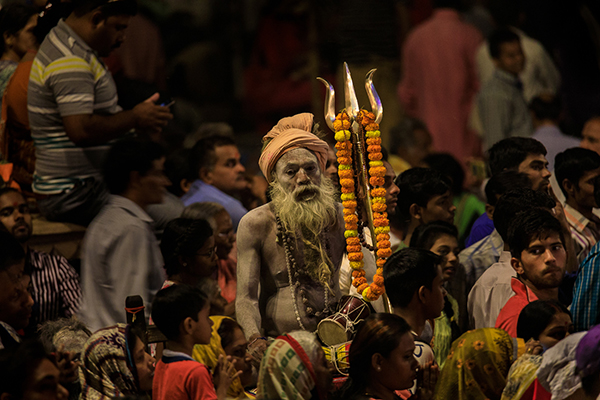
150-600mm G2 (152mm), F/6.3, ISO 6400, 1/40th sec.
Lewis and his group rented a boat to cruise along the Ganges when he spotted his next photographic subject. "There are long, almost flat-bottomed boats along the river that you can take out for a tour," he says. "As you float along and look toward the shore, you'll see the ghats, or steps that lead down to the river. These steps extend for miles along the Ganges in Varanasi."
When Lewis saw this priest strolling along the ghats, he knew he had to prepare for a photo. "It was early morning, and I spotted him walking through the crowd and toward this one section of steps with all of those cool lines," he says. "I asked the driver of the boat to stop and cut the motor so we wouldn't go past him. I waited for the priest to walk up to that empty section and into my frame so I could photograph him against those patterns."
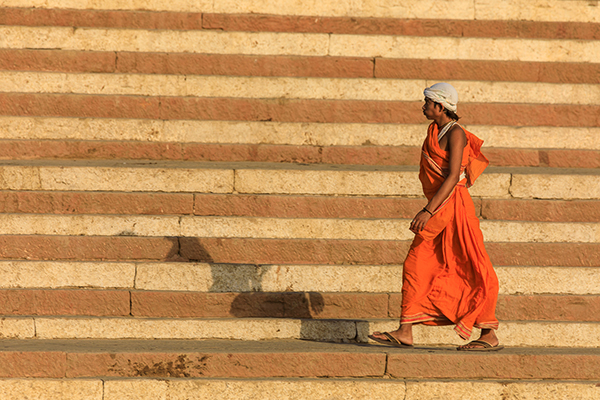
150-600mm G2 (600mm), F/10, ISO 250, 1/320th sec.
Cows are sacred to Hindus in India, and so they're free to wander the streets as they please. "This picture shows the entrance to the ghats leading down to the Ganges River, where the ceremony I mentioned earlier takes place," Lewis says. "I've visited that exact spot two or three times on each trip, and there's always a cow right there, and it's always a different cow. For some reason, that's the cows' sleeping spot. They're totally accustomed to being around people. You have to walk around them, because they're not going to budge for you. It was early in the morning when we saw this one relaxing and taking in the view."
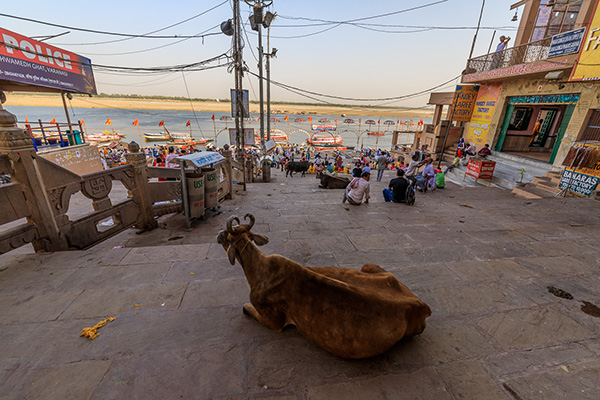
15-30mm (15mm), F/11, ISO 100, 1/25th sec.
Lewis says the tiger parks in India are similar to many national parks in the US, with giant expanses of land to wander—in this case in Jeeps. "Four photographers are assigned to a Jeep, with two guides: One is a driver from the lodge, and the other is a required guide from the park service," he says. "The park service guides were hit or miss during the eight days we visited the park, but the lodge guides were very good, which makes a big difference in the tiger photography experience."
A day in the tiger park is fairly structured. "You head out very early in the morning, while it's still dark, so you're in the park by sunrise," Lewis explains. "Then you're there until about 11 or 11:30. At that point you leave to give the tigers a chance to take a break. Around 3:30 or 4, you head back in and stay until the park closes, which varies by season. Usually that's around sunset."
While his group cruised around seeking tigers to photograph, there was an assortment of other creatures for them to take pictures of in the meantime. "There are deer and monkeys and hundreds of bird species, for example," Lewis explains. "You're always photographing something."
One of those birds is the Indian roller, the male version of which is known for aerobatic displays during mating periods, but which also enjoys perching on tree branches, stumps, and wires. "The bird we saw was very patient," Lewis says. "Our guide got the Jeep to within about 8 feet of this little guy, inching up slowly, and it never budged. That's another way the 150-600 G2 comes in handy—I can zoom in really tight without spooking the wildlife. The sharp detail in this photo is, again, partly due to using Mode 3 of that VC feature."
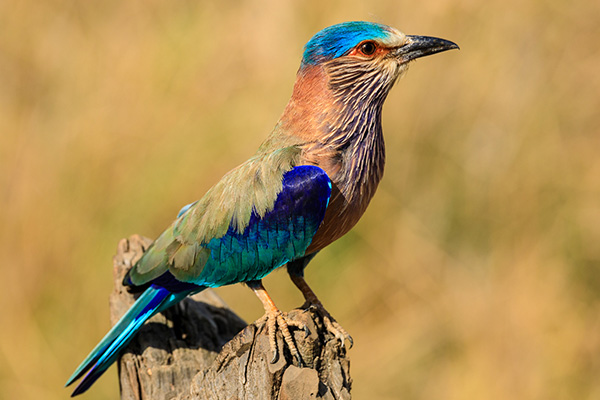
150-600mm G2 (483mm), F/8, ISO 400, 1/640th sec.
Searching for the tigers in the parks involves a lot of driving, anticipating, and waiting. "We mostly had to rely on the expertise of the guide," he says. "But the other animals help out, too. The monkeys and deer, for instance, will call out when the tigers are around. As soon as you hear an alarm call from the other animals, you drive like a maniac to wherever the calls are coming from."
The tiger that Lewis and his group encountered couldn't have come any closer. "If I hadn't been so excited, it would have been scary," he says. "We were backing the Jeep up to keep a fair distance away, because he was coming right at us. We were in an open vehicle—if the tiger had been in the mood, it could've jumped right into the Jeep."
Because Lewis was sitting in the back seat, with other people in front of him, he had to get creative to capture his photo. "The tiger was right in the middle of the road, so I leaned out of the side of the vehicle so I could see around everyone," he says. "I was holding the camera without a whole lot of support, just barely able to look through my viewfinder to make sure I was aimed at the tiger. I just crossed my fingers and hoped! The image came out so sharp. That 150-600 lens amazes me—I can get away with doing stuff like this."
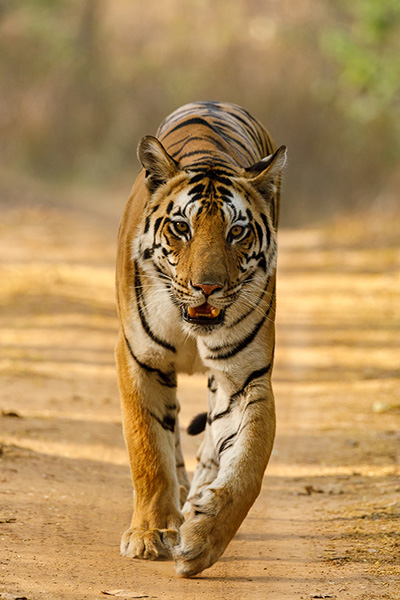
150-600mm G2 (600mm), F/9, ISO 3200, 1/400th sec.
Lewis will be heading back to India in the fall, where he'll once again stop over in Varanasi, as well as check out the Taj Mahal and the Pushkar Camel Fair, a multiday extravaganza held each October or November around the time of the full moon in the deserts of Rajasthan. "It's a fantastic event where people come from all over India to buy, sell, and trade their camels and other livestock," he explains. "It's a whole different type of fun. I can't wait to take pictures of it!"
To see more of Lewis Kemper's work, go to www.lewiskemper.com.
